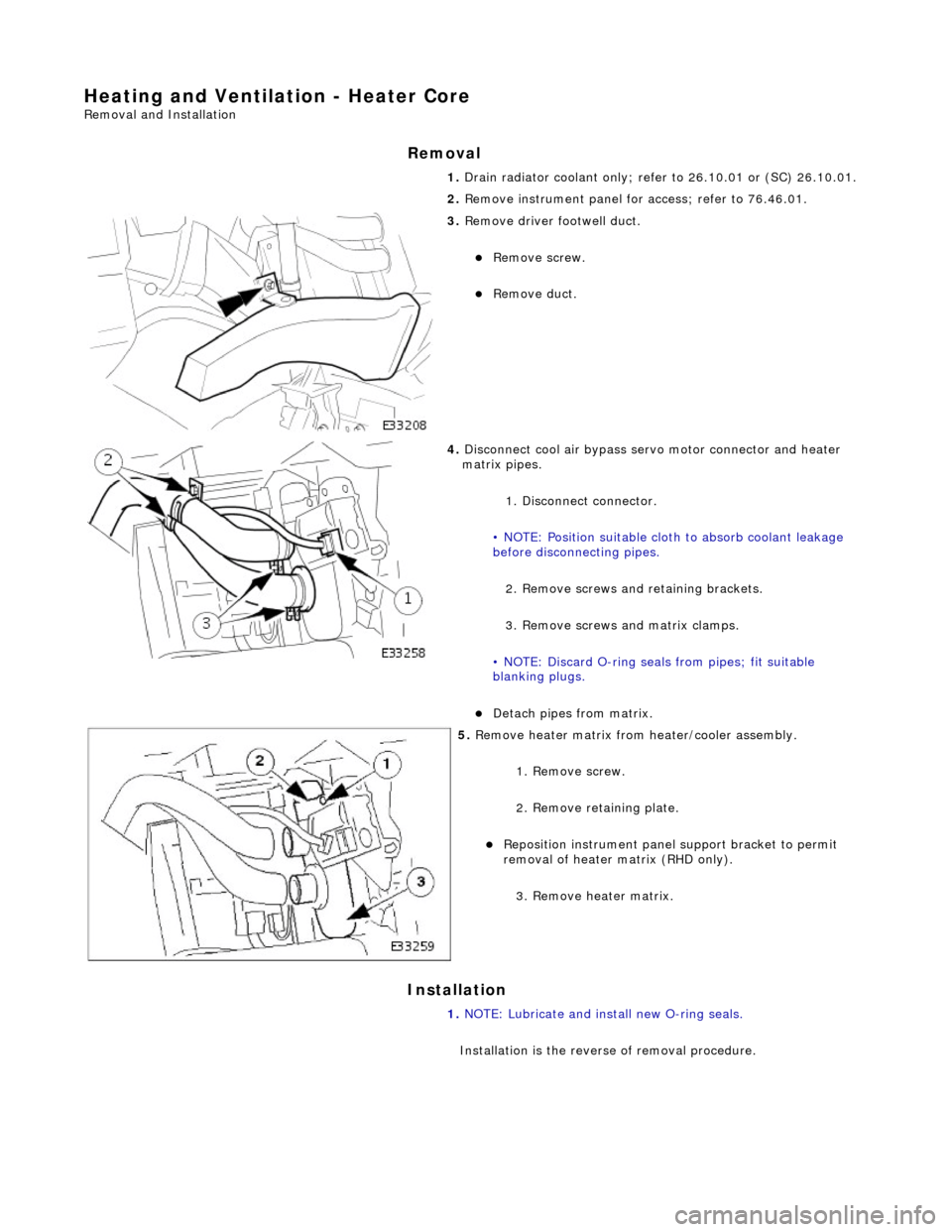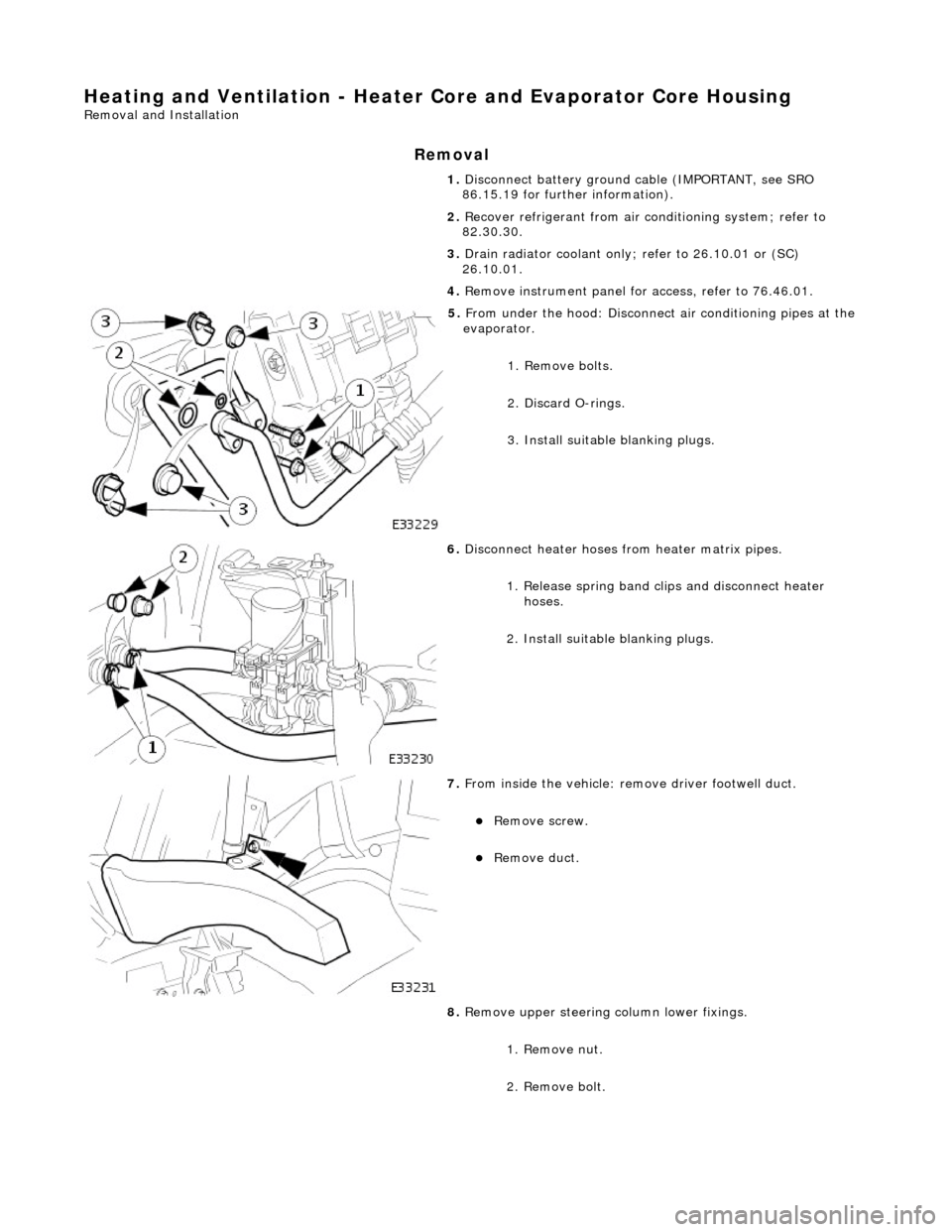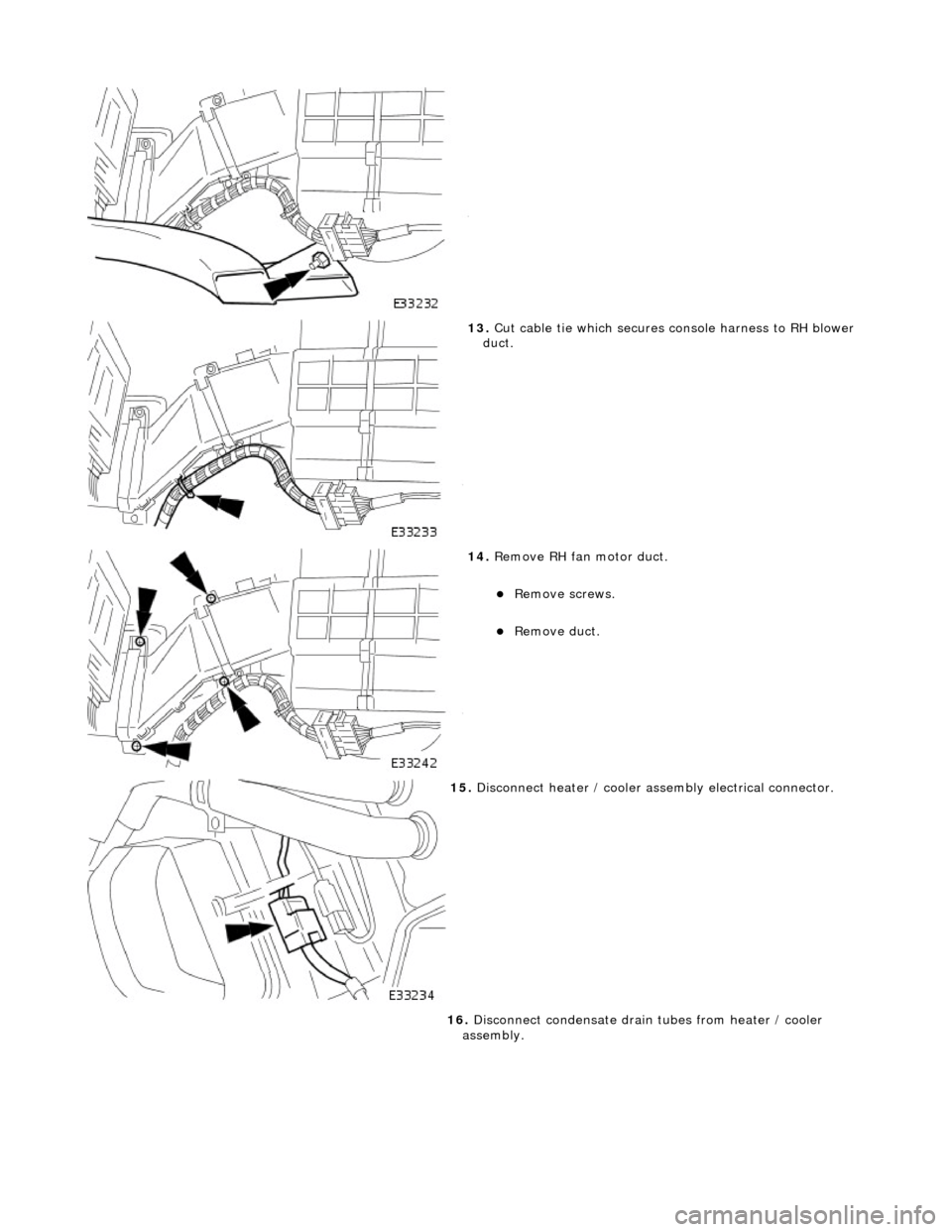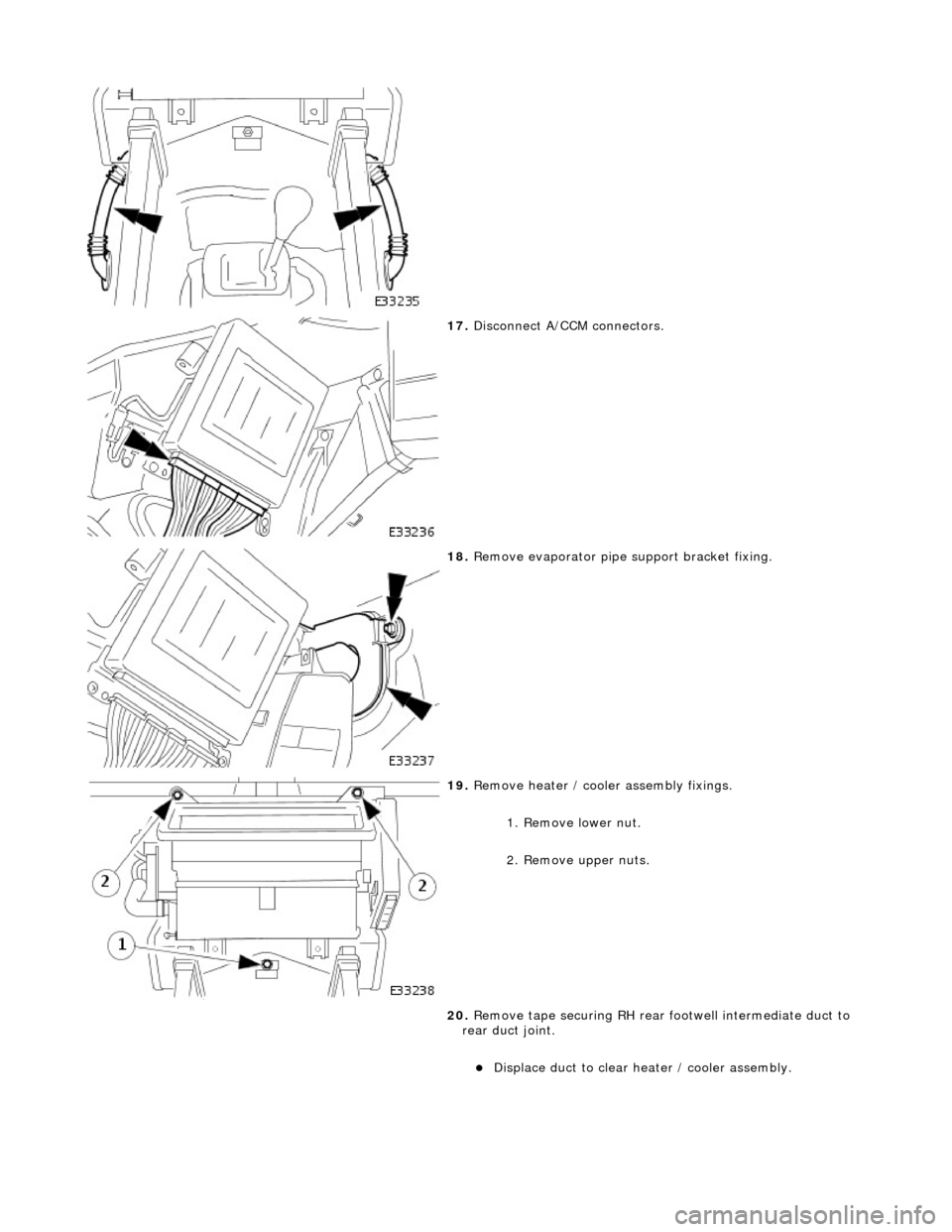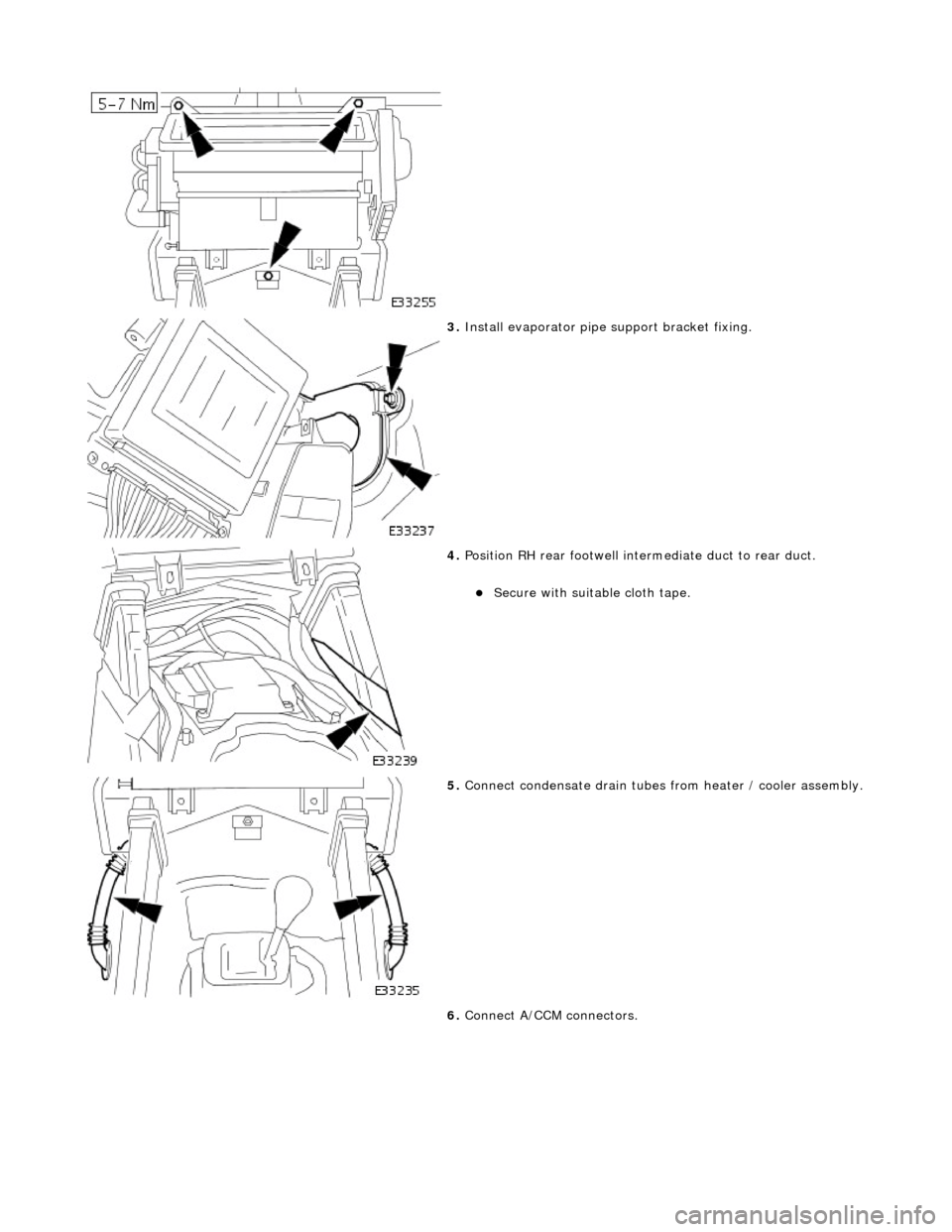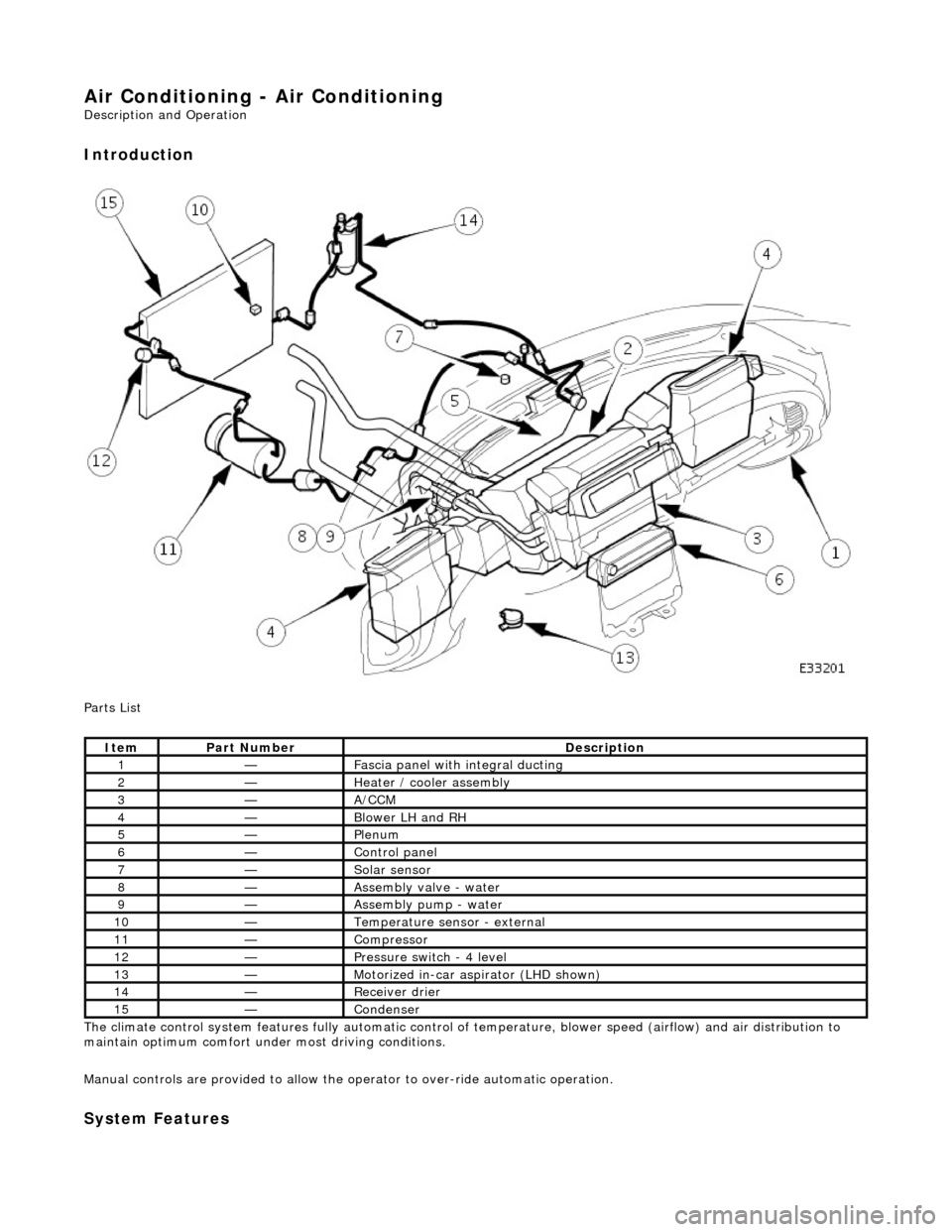JAGUAR X308 1998 2.G Repair Manual
X308 1998 2.G
JAGUAR
JAGUAR
https://www.carmanualsonline.info/img/21/7640/w960_7640-0.png
JAGUAR X308 1998 2.G Repair Manual
Page 1787 of 2490
Heating and Ventilation - Heater Core
Removal and Installation
Removal
Installation
1.
Drain radiator coolant only; re fer to 26.10.01 or (SC) 26.10.01.
2. Remove instrument panel for access; refer to 76.46.01.
3. Remove driver footwell duct.
пЃ¬Remove screw.
пЃ¬Remove duct.
4. Disconnect cool air bypass serv o motor connector and heater
matrix pipes.
1. Disconnect connector.
• NOTE: Position suitable clot h to absorb coolant leakage
before disconnecting pipes.
2. Remove screws and retaining brackets.
3. Remove screws and matrix clamps.
• NOTE: Discard O-ring seals from pipes; fit suitable
blanking plugs.
пЃ¬Detach pipes from matrix.
5. Remove heater matrix from heater/cooler assembly.
1. Remove screw.
2. Remove retaining plate.
пЃ¬Reposition instrument panel support bracket to permit
removal of heater matrix (RHD only).
3. Remove heater matrix.
1. NOTE: Lubricate and install new O-ring seals.
Installation is the reverse of removal procedure.
Page 1788 of 2490
Heating and Ventilation - Heater Core and Evaporator Core Housing
Removal and Installation
Removal
1. Disconnect battery ground cable (IMPORTANT, see SRO
86.15.19 for further information).
2. Recover refrigerant from air co nditioning system; refer to
82.30.30.
3. Drain radiator coolant only; refer to 26.10.01 or (SC)
26.10.01.
4. Remove instrument panel for access, refer to 76.46.01.
5. From under the hood: Disconnect air conditioning pipes at the
evaporator.
1. Remove bolts.
2. Discard O-rings.
3. Install suitable blanking plugs.
6. Disconnect heater hoses from heater matrix pipes.
1. Release spring band clips and disconnect heater hoses.
2. Install suitable blanking plugs.
7. From inside the vehicle: re move driver footwell duct.
пЃ¬Remove screw.
пЃ¬Remove duct.
8. Remove upper steering column lower fixings.
1. Remove nut.
2. Remove bolt.
Page 1790 of 2490
13. Cut cable tie which secures console harness to RH blower
duct.
14. Remove RH fan motor duct.
пЃ¬Remove screws.
пЃ¬Remove duct.
15. Disconnect heater / cooler assembly electrical connector.
16. Disconnect condensate drain tubes from heater / cooler
assembly.
Page 1791 of 2490
17. Disconnect A/CCM connectors.
18. Remove evaporator pipe support bracket fixing.
19. Remove heater / cooler assembly fixings.
1. Remove lower nut.
2. Remove upper nuts.
20. Remove tape securing RH rear footwell intermediate duct to
rear duct joint.
пЃ¬Displace duct to clear heater / cooler assembly.
Page 1792 of 2490
Installation
21. Remove tape securing LH rear footwell intermediate duct to
rear duct joint.
пЃ¬Displace duct to clear heater / cooler assembly.
22. Remove heater / cooler assembly from vehicle.
пЃ¬Guide matrix heater pipe stubs through firewall grommet
and remove assembly.
1. Install heater / cooler assembly into vehicle.
пЃ¬Guide matrix heater pipe stubs through firewall grommet.
пЃ¬Position heater / cooler as sembly against firewall.
2. Install heater / cooler assembly fixings.
пЃ¬Install upper fixing nuts.
пЃ¬Install lower fixing nut.
Page 1793 of 2490
3. Install evaporator pipe support bracket fixing.
4. Position RH rear footwell inte rmediate duct to rear duct.
пЃ¬Secure with suitable cloth tape.
5. Connect condensate drain tubes from heater / cooler assembly.
6. Connect A/CCM connectors.
Page 1794 of 2490
7. Position LH rear footwell inte rmediate duct to rear duct.
пЃ¬Secure with suitable cloth tape.
8. Connect heater / cooler assembly electrical connector.
9. Install LH fan motor duct.
пЃ¬Install duct.
пЃ¬Install screws.
10. Install cable tie to secure console harness to LH blower duct.
Page 1796 of 2490
15. Position upper steering column and install upper fixings.
1. Install bolts, do not tighten.
16. Install upper steering column lower fixings.
пЃ¬Tighten fixings.
17. Tighten upper fi xing bolts.
18. Under hood: reconnect heater ho ses to heater matrix pipes.
пЃ¬Remove blanking plugs.
пЃ¬Reconnect heater hoses and secure with spring band clips.
Page 1798 of 2490
Air Conditioning - Air Conditioning
Description and Operation
Introduction
Parts List
The climate control system features fully automatic control of temperature, blower speed (airflow) and air distribution to
maintain optimum comfort under most driving conditions.
Manual controls are provided to allow the operator to over-ride automatic operation.
System Features
ItemPart NumberDescription
1—Fascia panel with integral ducting
2—Heater / cooler assembly
3—A/CCM
4—Blower LH and RH
5—Plenum
6—Control panel
7—Solar sensor
8—Assembly valve - water
9—Assembly pump - water
10—Temperature sensor - external
11—Compressor
12—Pressure switch - 4 level
13—Motorized in-car aspirator (LHD shown)
14—Receiver drier
15—Condenser
Page 1799 of 2490
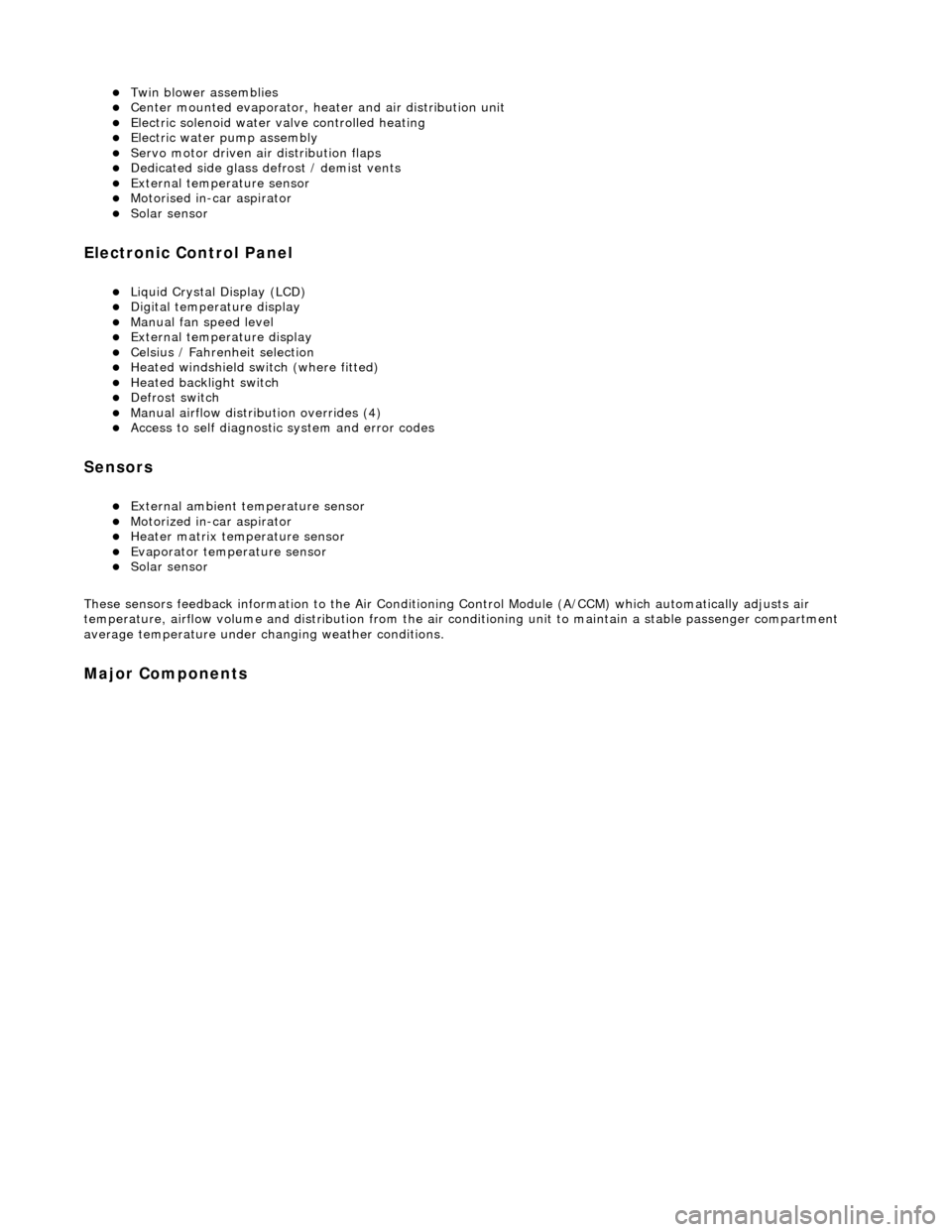
пЃ¬Twin blower assemblies пЃ¬Center mounted evaporator, heater and air distribution unit пЃ¬Electric solenoid water valve controlled heating пЃ¬Electric water pump assembly пЃ¬Servo motor driven air distribution flaps пЃ¬Dedicated side glass defrost / demist vents пЃ¬External temperature sensor пЃ¬Motorised in-car aspirator пЃ¬Solar sensor
Electronic Control Panel
пЃ¬Liquid Crystal Display (LCD) пЃ¬Digital temperature display пЃ¬Manual fan speed level пЃ¬External temperature display пЃ¬Celsius / Fahrenheit selection пЃ¬Heated windshield switch (where fitted) пЃ¬Heated backlight switch пЃ¬Defrost switch пЃ¬Manual airflow distribution overrides (4) пЃ¬Access to self diagnostic system and error codes
Sensors
пЃ¬External ambient temperature sensor пЃ¬Motorized in-car aspirator пЃ¬Heater matrix temperature sensor пЃ¬Evaporator temperature sensor пЃ¬Solar sensor
These sensors feedback information to the Air Conditioning Control Module (A/CCM) which automatically adjusts air
temperature, airflow volume and distributi on from the air conditioning unit to maintain a stable passenger compartment
average temperature under changing weather conditions.
Major Components
